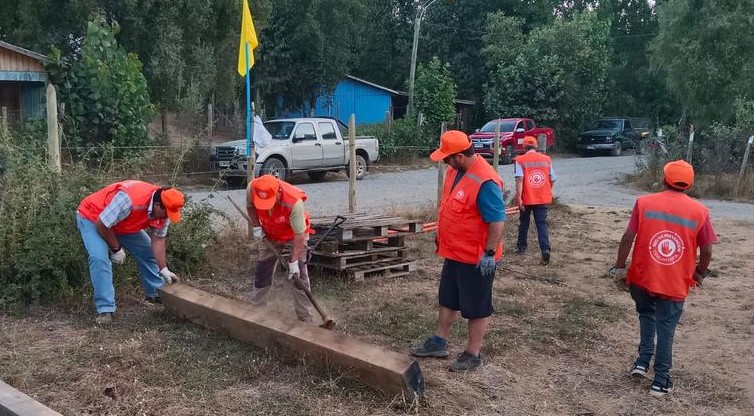In Six Months of Enforcement, the Land Seizure Law Reduced These Crimes by Nearly 50%
Compared to the same period last year, cases dropped from 63 to 34. However, the highest recurrence was in Biobío, the region accounting for half of the incidents.
A study analyzing the effectiveness of Law 21.633, known as the Land Seizure Law—which modified the classification of the crime and increased penalties for those occupying private and public lands and properties—revealed a 46% reduction in such incidents across the four regions of the southern macrozone.
The analysis, conducted by former security coordinator Pablo Urquizar, is based on official data from Carabineros and focuses exclusively on the aforementioned area of the country, though the law, like all legislation, has nationwide scope.
The study compares the six months before and after the law's enactment—that is, the period from November 24, 2023 (its promulgation date) to May 23 of this year, against the preceding six-month span.
As a result, cases decreased from 63 to 34. However, the highest recurrence occurred in Biobío (17), followed by La Araucanía (10), Los Lagos (5), and Los Ríos (2).
In his breakdown, Urquizar notes that, unlike previous regulations on the matter—which only imposed fines and citations—136 individuals caught in the act of occupying others' lands have now been arrested.
Of the total arrests, 69 took place in Biobío; 55 in La Araucanía; six in Los Ríos; and six in Los Lagos. "Before the law, those committing land seizures were not detained. In this regard, recall that the leader of the Arauco Malleco Coordinator (CAM), Héctor Llaitul, who carried out a violent seizure, only received a fine for this crime," Urquizar states, referencing the activist's 23-year prison sentence issued in May—pending confirmation by the Supreme Court on July 29, when a nullification appeal will be resolved.
Regarding the type of seizure, of the 34 reported cases, 25 involved no violence, eight resulted in property damage, and only one was violent due to the perpetrators' actions. "74% of seizures are non-violent, 2.9% are violent, and 23.1% are non-violent but involve property damage," explains the former coordinator.
"Procedural Impacts Remain to Be Analyzed"
While emphasizing that the law "has been positive," Urquizar highlights that it provides "the right disincentives to deter these crimes."
Regarding the law's scope and potential improvements in its application, the specialist argues that "its procedural impacts still need analysis," which involves "determining whether those arrested for these crimes have been convicted—something that cannot yet be established in just six months, a very short timeframe for criminal proceedings."
Source: subscription edition ofEl Mercurio
/data/user/0/com.samsung.android.app.notes/files/clipdata/clipdata_bodytext_240714_133446_670.sdocx

















